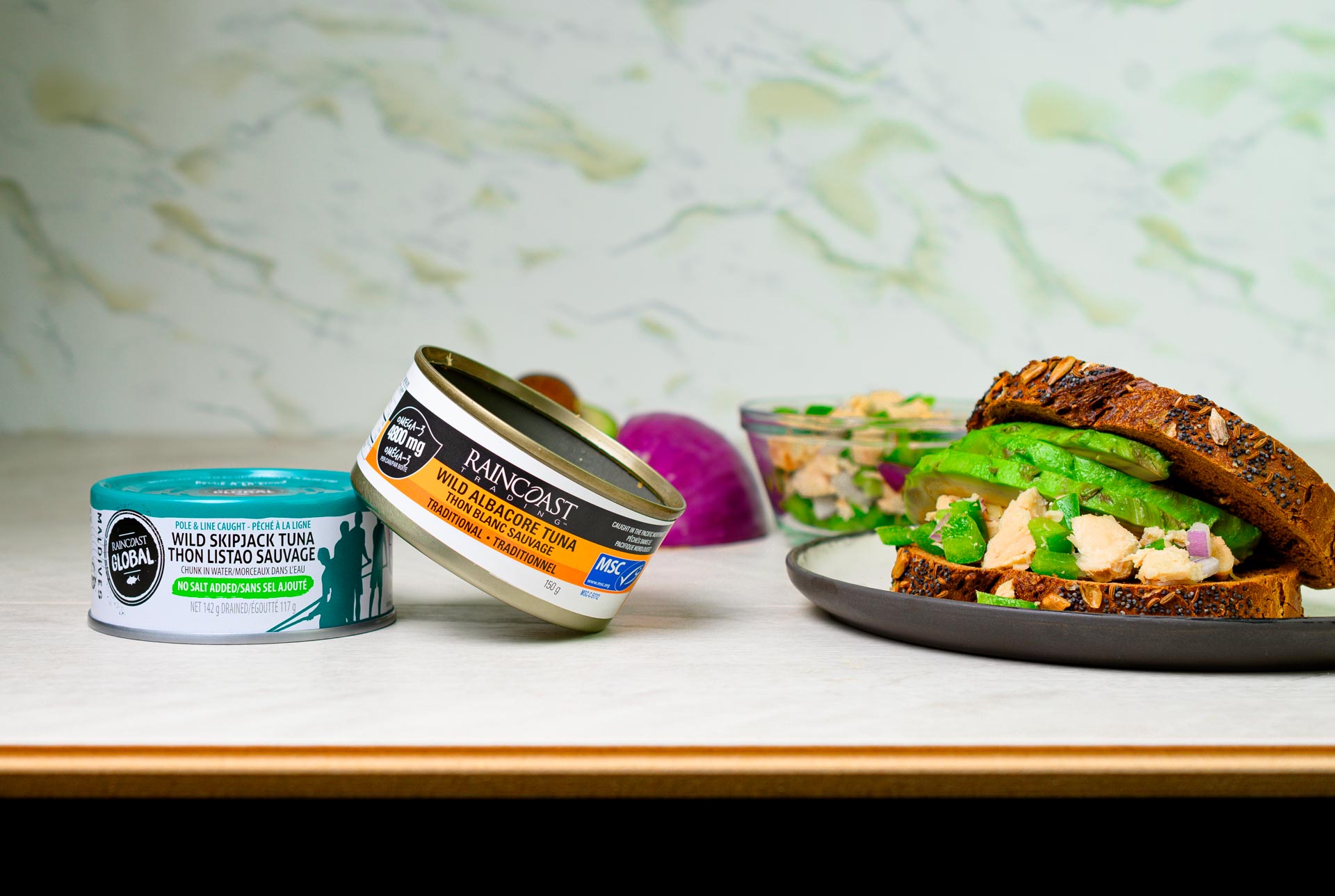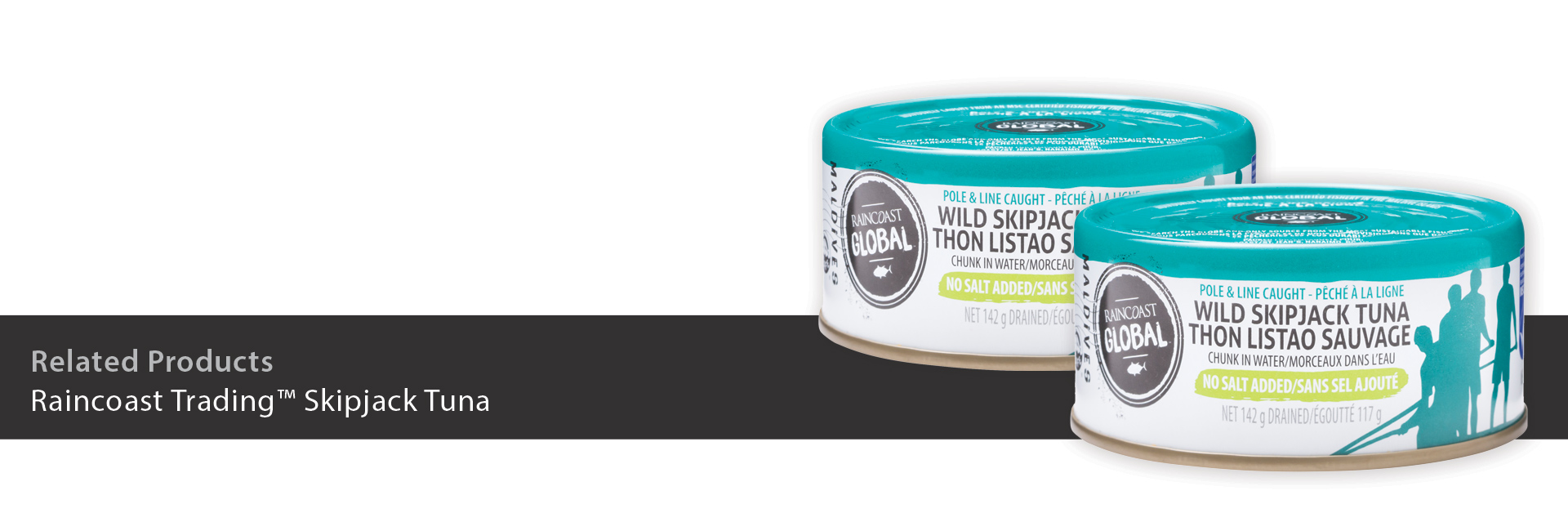What Do We Mean by Sustainable Seafood?
We care about helping people lead healthier lives and, as passionate as we are about bringing you the highest quality, healthiest seafood, we are equally as passionate about the health of our oceans.
We specialize in the production of three wild-caught ocean proteins: Salmon, Tuna, and Pacific Sardines, but today we want to focus on one of our fan favourites –tuna! So, let’s get started.
Seafood is an excellent source of sustenance on a global level with its rich nutritional value and availability worldwide. However, an estimated 32.4% of global fisheries have been fished beyond sustainable limits, threatening the health of this last, truly wild, food source.2
Sustainable seafood combats the damage done by overfishing by ensuring a species is caught in a way that safeguards the long-term health and stability of that species, as well as the greater marine ecosystem.
So How Do We Catch Our Tuna?
Well first things first, all our tuna is wild-caught, never farmed! But more specifically, we only source our tuna from fisheries that have been certified as sustainable by the Marine Stewardship Council (MSC).
To become MSC Certified, a fishery must adhere to the following strict set of standards1:
- Their fish stocks must remain sustainable so the species can repopulate indefinitely
- Fishing must be done in a way that minimizes the environmental impact on surrounding habitats
- The fishery must be managed effectively to respond quickly to changes in the status quo
The fishing method a fishery uses plays a huge role in the environmental impact associated with sourcing a particular species, with one reason being how often it results in bycatch.
Bycatch
Bycatch is when anything unwanted is caught during the fishing process, which can include dolphins, turtles, sea birds, or other fish species.
Our Skipjack Tuna is caught by Pole and Line fishing, a method with a long and proud history of fishing in a traditional one-line way that dates back hundreds of years. Today these traditional techniques are proven to be the most environmentally responsible methods possible for sourcing Skipjack and eliminate the risk of bycatch completely!
Longlining is the most common method of sourcing Albacore Tuna worldwide, but it results in the bycatch of sea turtles, sharks, and seabirds in large numbers. We’ve replaced this traditional and non-discretionary method for fishing Albacore Tuna with the ‘Hook and Line’ technique. Hook and Line fishing trolls 12 barbless hooks behind a fishing vessel resulting in little to no bycatch. It also helps the Albacore Tuna population stay healthy because it doesn’t encourage overfishing.
Traceability
Sourcing traceability is also crucial for substantiating a sustainability claim, which is why it’s at the forefront of what we do. As part of our ongoing commitment to quality and sustainability, we’ve designed a system to track every fish from boat to can.
Each product we create is developed with a production code that tells us the catch vessel and its captain, sourcing location and method, as well as trip dates. You might be wondering what we do with these numbers and what purpose they serve?
Ocean conservationists rely on this information as part of their auditing system, so we can (and do!) provide them with our own recordings.
Thanks so much for reading along, we hope you’ve learned something new about the world of sustainable seafood.
We’ve included links to two healthy tuna recipes you might want to try this summer:
Veggie Tuna Wraps with Homemade Garlic Ranch Dressing

References:
1. https://www.msc.org/en-us/standards-and-certification/fisheries-standard
2. https://www.msc.org/en-us/what-we-are-doing/oceans-at-risk
